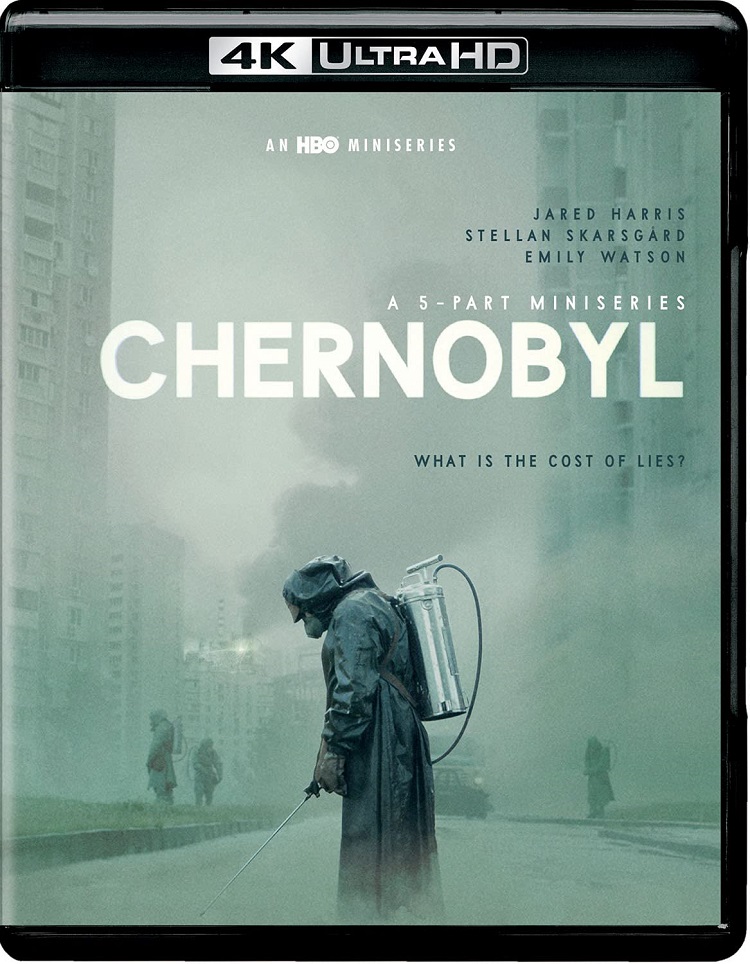
Chernobyl is a horror story with two monsters. One is technological, the other is human. The human horror caused the technological, which wreaked its havoc upon an unsuspecting, completely unknowing populace. It’s a story about the terror of an unseen monster wantonly destroying lives, and about a system of men desperate to avoid responsibility and accountability, letting more die rather than stepping in and doing what little they could to stop it.
The historical facts are, of course, now well known: on April 24th of 1986, a reactor at a Soviet nuclear power plant at Chernobyl exploded, sending up swaths of murderous radiation and nearly causing a complete meltdown. Heroic efforts by various entities eventually turned the catastrophe into just a horrifying disaster. But history’s perspective is not available to the people living it, and at the time there was no telling not only what could be done, but in fact what had happened.
Because it was known to the experts that the type of reactor at Chernobyl could not explode. The safety measures in place made that impossible, so something else must have happened. So while men on the ground tried to understand just what the hell had occurred, the normal, calm safety procedures went forward. Firefighters tried to stop a blaze on the plant rooftop. Men went into the reactor core to investigate exactly what happened. Bystanders came to watch the blaze, and the strange glow that was emanating from the power plant, totally unaware that it was killing them as they watched.
Chernobyl, a five-part miniseries first broadcast on HBO, tells the story mostly in order from several perspectives that experienced it: a firefighter called to the scene, the local officials whose job it was to discover what occurred (and, of course, to control information about what was discovered, lest “misinformation” cause a panic), and once the full ramifications of the disaster were uncovered, a broader collection of experts and government men to deal with the problem, and to manage information about it.
Valery Legasov, Boris Shcherbina, and Ulama Khomyuk are the three primary characters followed throughout the series. Legasov is a scientist, Boris an apparatchik, both based on real people. Ulama, a nuclear physicist, is a composite character created to help tell the story, who despite government claims to the contrary realizes the disaster is much worse than the official story. She is consumed with what, at the time, was a primary mystery: how could this reactor, with all the built-in safety measures, explode?
Legasov is the one who understands what has to be solve the immediate problems, and Boris has the government’s ear and translates Legasov’s desperate concerns into something that the Soviet bureaucracy might actually listen to. But that means constantly cushioning the reality for party officials who do not want to know how awful the reality of the disaster is, and how much worse it might become.
Interspersed with the governmental response are individual stories, adding dimension and scope to the series. A firefighter’s wife travels to a Moscow hospital to find her husband, who at first appears to be getting better, but then deteriorates into a shocking mass of bleeding tissue. When it becomes clear that solving one problem (putting out the fire) has caused another (the sand used to put out the fire is turning to lava and burning through to water tanks below, ready to cause another explosion), volunteer divers are sought for what is certain to be a suicide mission. Miners have to dig a tunnel underneath the reactor core, and do so without heavy equipment, and with the near certainty of radioactive poisoning and eventual premature death.
Horrors accumulate, and while the show is occasionally gory (the deteriorating firefighter is one of the most disturbing images of body horror I’ve seen in a long time), it never becomes sensational or outlandish. The very plausibility and realism of the sores, the bleeding, the burns, and disfigurings makes them all the more disturbing.
Plausibility is the key to the series’ effectiveness. There have been questions about how historically accurate the show’s depiction of events is, and of course some of the characters, like the aforementioned Ulama, are invented for the purpose of telling the story. One of the more harrowing stories in the series, involving soldiers who were sent out to the evacuated towns around the plant and made to shoot all the domestic, presumably contaminated, animals, likely didn’t happen the way it’s shown in the series. But the broad strokes are true, many of the details realistic if not completely accurate, and the central thesis strikes home more than anything: however terrible a crisis is, it can be made worse by lies, dissembling, and attempts to shift blame.
Chernobyl is somber, and extremely disturbing. While not particularly fast paced, the show never dragged. It deftly tells it story without heavy-handedness – none of the personal stories descend into maudlin sentiment or into cheap heroics, which often happens in disaster stories. There are real heroics and real cowardice in one of the most effective and gripping TV series I’ve seen in a long time.
Chernobyl has been released on 4K UHD Blu-ray by HBO. The UHD release also includes standard Blu-rays of the program, and a digital code. Included on the disc are some brief video extras. On Disc One there’s three Inside the Episode featurettes (8 min), “What is Chernobyl?” (2 min), and three short interviews with Jared Harris, Stellan Skarsgard, and Emily Watson, “Meet the Key Players” (6 min). Disc Two contains two more Inside the Episode featurettes (7 min) and three other short featurettes: “Behind the Curtain: Director Johan Renck” (2 min), “Script to Screen: The Divers” (2 min), and “Pivotal Moment: The Trial “(2 min).